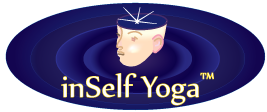-
Quote from: Mi~Beloved
Kapalabhati and bhastrika are the same breath infusion, except that kapalabhati is the preliminary stage with stress/focus on the exhale while bhastrika has stress on both the inhale and exhale. These I feel are the best for raising kundalini and surcharging the subtle body. Please if you can check my book Kundalini Hatha Yoga Pradipika to see that bhastrika is the top notch pranayama practice.
All the standard methods of pranayama are good. A yogi should try every one if he can learn it, and then decide which best suits his needs. In my view bhastrika is the most rapid method for infusing prana (subtle energy) into the subtle body so that kundalini will be surcharged and aroused. Why?
Because if that is acccomplished, the subtle body will go into pratyahar and then when one sits to meditate it is likely that one will do samyama easily. Samyama according to Patanjali is the progression of dharana into dhyana into samadhi.
However I have no objection to the use of any other pranayama, provided there is a result which accelerates the practice and causes the yogi to achieve the silencing of the chittavritti.
It is a good idea, that if you do pranayama, make a video of it and get it posted on line, so that other yogis who are not expert at it and who may learn from it, can get hints about it.
Remember that Patanjali listed pratyahar introspective state after pranayama. That is a hint that the practice of pranayama should give the result of pratyahar or at least it should make it easier to put the mind into pratyahar.
Thanks for pointing your book, I read it few years ago and maybe I should reread it, I bought your invison books to understand what is behind your flow because I see value behind it.
I use kapalabhati, bhastrika and another pranayam after asana practice where jump-starts prana but then it is too much to relax into pratyahar so I do other techniques.
kapalabhati makes sense in a way that asanas you perform it because they are more or less static (i.e. hatha) and one does not have to compromise on pramayam. Once one starts moving prana there is going to be much more stress on the body. This is one of the reasons I stick to ujjayi because asanas are more physical, there are more transitions etc. Actually, it answers my question :).
Videos, well, when I retire maybe ... to be honest you should create more videos that you can share to the world :).
Comment to kapalabhati
